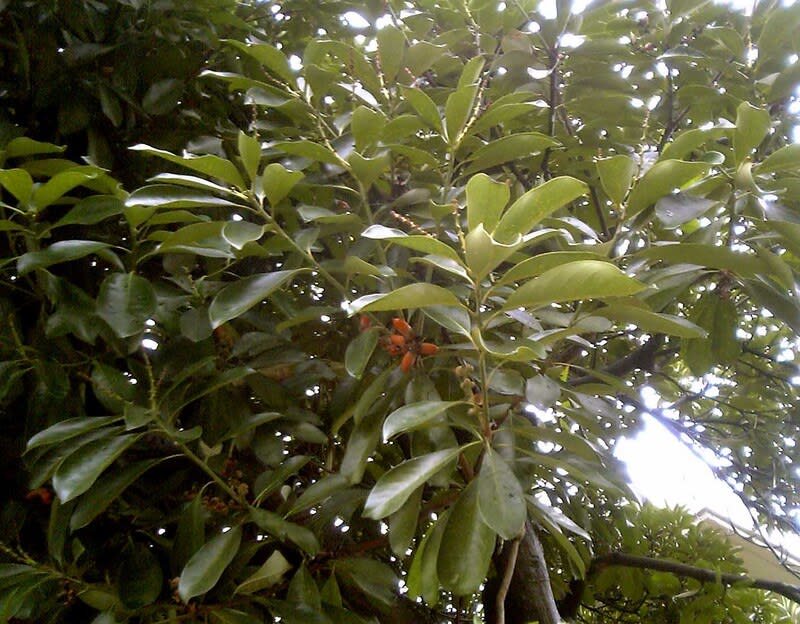Sudajii (most common), Japanese Stone Oak, edible Lithocarpus
Lithocarpus edulis

🌿 Morphology
🌞 Growing conditions
🌍 Origin and family
🌾 Uses
Warning: Despite the care taken in writing this sheet, it is essential to cross-reference sources before using or consuming any plant. When in doubt, consult a qualified professional
Permaculture uses
Edible nuts that can be eaten raw or cooked. The wood is used for construction and furniture. The tree provides shade and can be used as a windbreak. Nuts are less bitter than other Lithocarpus species.
Permapeople description
Lithocarpus edulis, also known as Japanese stone oak, is a species of evergreen tree in the Fagaceae family. It is native to Japan, Korea, and Taiwan, and produces edible acorns.
Botanical description
Lithocarpus edulis is an evergreen tree that typically grows to a height of 15-20 meters. The leaves are leathery, oblong-lanceolate, and 8-15 cm long. The flowers are monoecious, with male catkins and inconspicuous female flowers. The fruit is a globose or ovoid nut, 2-3 cm in diameter, enclosed in a cupule covering about one-third of the nut. The bark is grayish-brown and smooth when young, becoming fissured with age.
Companion planting
No specific companion planting information is readily available. General companion planting guidelines for nut-producing trees apply. It is likely to associate well with plants that benefit from shade and well-drained soil. Avoid planting near plants susceptible to root competition.
Propagation methods
Propagation is primarily by seed. Stratification may be required to break dormancy. Cuttings can be taken, but are more challenging. Grafting is also a possible method to propagate specific cultivars.
History and traditions
The nuts of Lithocarpus edulis have been consumed in Japan for centuries. The tree has been used in traditional medicine for various ailments, including digestive problems and skin conditions. It also features in some local folklore as a symbol of prosperity and longevity.
Usage calendar
Flowering occurs in spring (April-May). Nuts mature in autumn (September-October). Seeds should be sown in autumn or early spring. Pruning can be done in late winter.
